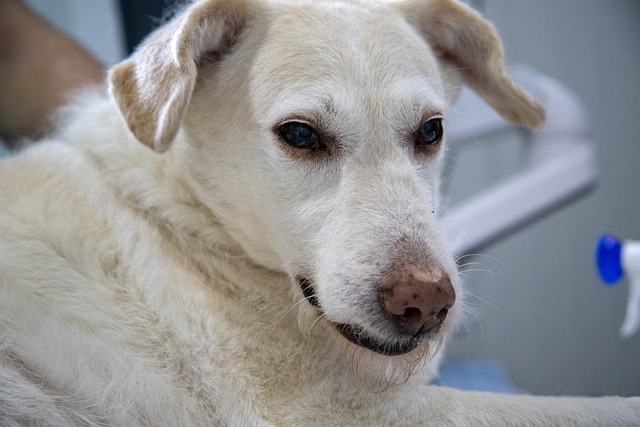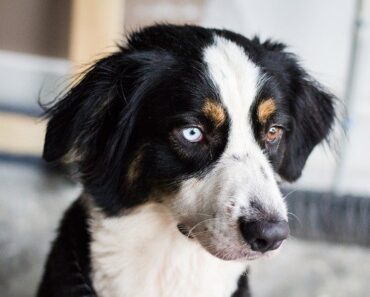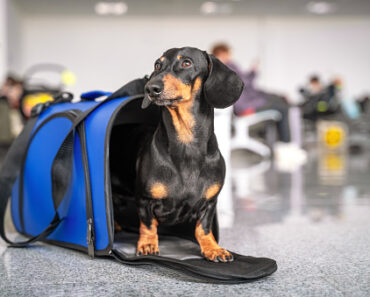
Leishmaniasis is a potentially serious and even fatal disease caused by a parasite called Leishmania Infantum. Its incidence has been increasing in recent years.
How do dogs get infected?
Dogs contract Leishmaniasis through the bite of small flying insects called Phlebotomas. They look like small gnats of about 2 to 3 millimeters, very hairy and very quiet. These insects need heat and humidity and are therefore active in tropical areas, as well as in temperate zones during the hot months. For this reason, the regions “at risk” of Leishmaniasis are the Mediterranean basin and Southern Europe (Portugal, Spain, Italy, Greece…), especially between July and September. Due to a progressive northward extension in recent years, the whole south of France is concerned. This extension could be due, among other things, to climate change.
The sandflies reproduce in humid places such as excrement, manure piles or animal burrows. They fly rather poorly and generally do not go far from their home.
In sandflies, only the female stings. During the day, it remains lurking in dark and humid corners. It is active at night and at dusk. Dogs that spend the night outside are therefore particularly exposed, and can be bitten several hundred times during the night. The stings mainly concern the areas with little hair such as the ears, eyelids or muzzle.
By stinging, the sandfly inoculates the dog’s dermis with leishmanias, which will spread throughout the body and will be localized in the tissues in cells called macrophages.
Once infected, the dog can infect other sandflies, which in turn spread the parasite. It is important to know that humans can also get this disease if they are bitten by a contaminated sandfly. Children and immunocompromised people are most susceptible. It is a disease of great concern in tropical regions. In France, the transmission from dog to man in the absence of vector remains quite exceptional, but it should be kept in mind that the dog can be a reservoir of Leishmaniasis.
What are the symptoms of the disease?
When a dog is infected with Leishmaniasis, two scenarios are possible :
-He can remain an asymptomatic carrier, i.e. he is infected but does not show any symptoms. This is what happens in most cases. However, these asymptomatic carrier dogs still represent a reservoir of Leishmaniasis, and thus a source of infection. The disease may sometimes remain silent for the whole life of the dog, but it may reappear at any time, due to stress or decreased immunity, as with any other health problem.
-Or it may express symptoms that are sometimes severe.
Age plays a role in the expression of the disease: there is a peak in young dogs under 3 years of age, and a second peak in dogs over 8 years of age.
Moreover, some dogs are more resistant to the disease, while others are more sensitive to it. Genetics would probably have something to do with it. This would also explain why some breeds like the German Shepherd, Boxer and Rottweiler express the disease more often, and why others like the Ibizan appear to be resistant.
When the disease expresses itself, it affects the whole body, and the symptoms can be very varied. After an incubation phase that can range from three months to several years, the dog is often in poor general condition, thin and lethargic. It may feel as if he has taken “a blow of old age”. A fever is eventually present.
Classically one can observe skin lesions without itching (depilation, dandruff, nodules…) and swelling of the lymph nodes. Chronic kidney damage is often present, which is why infected dogs sometimes drink and urinate a lot. Other common symptoms are joint swelling that can cause lameness, diarrhea and vomiting, nosebleeds and sometimes damage to the eye and surrounding tissues (red and watery eyes, inflammation of the eyelids…). In some dogs, abnormally rapid claw growth can also be observed: this is called onychogriffosis.
Leishmaniasis is a chronic disease, which slowly progresses to death.
Faced with such a variety of symptoms, the diagnosis is often difficult without further examinations. A blood or urine test can help the veterinarian to refine the diagnosis, e.g. by detecting anemia or kidney damage. There are also specific tests that can be performed from blood samples, bone marrow or lymph node puncture or skin biopsy. The veterinarian will then suggest the most appropriate diagnostic test for your dog’s situation.
Several specific treatments exist. The most commonly used is a combination of two molecules (meglumine Antimoniate and allopurinol) that seems to bring a satisfactory remission of symptoms after a few weeks, with generally limited side effects. Quite long, it must be rigorously followed for several months at least, even several years and sometimes even for the whole life of the dog. This can therefore represent a rather large budget. Meglumine antimoniate is generally available in injectable form, and allopurinol is administered orally.
The treatment does not allow the dog to get rid of the leishmaniasis permanently. Its efficacy is variable and depends a lot on the dog itself and the progress of the disease. In any case, it can alleviate and suppress the symptoms for a more or less long period of time, or even permanently, but the dog remains a carrier of the parasites. Therefore, relapses are frequent within a year after stopping treatment. It is therefore important to carry out regular veterinary follow-up throughout the dog’s life.
To this specific treatment can be added, if necessary, a symptomatic treatment adapted to the dog’s symptoms (eye drops, infusions…).
The treatment is therefore long and difficult, relapses are frequent and the prognosis is always reserved, especially since the renal damage often present can be irreversible. Thus, the old adage “prevention is better than cure” is particularly well adapted to the case of Leishmaniasis.
How can I protect my dog?
The best way to protect your dog against Leishmaniasis is to protect it against its vector: sandflies. So, if you have to take him with you to a risk area, try as much as possible to keep him indoors in the evening and at night, when the insects are active.
Attracted by light, sandflies may also try to enter houses in the evening. This is why the use of repellents is very useful. They can be applied in your home (sprays around doors and windows, fine-mesh mosquito nets soaked in insecticide) and directly on the dog in the form of pipettes, sprays or collars. The collars must be placed at least 1 week before departure, and have a duration of action of several months. The pipettes and sprays act more quickly (almost immediately for sprays) but offer a shorter protection. Your veterinarian will be able to advise you on this subject.
These preventive measures may be sufficient if you travel for a short period of time.
However, if your dog regularly stays in high-risk areas for long periods of time, or if you live there year-round, a vaccine has been available for a few years to reduce the risk of developing symptoms in the event of infection. It can be carried out from the age of 6 months on dogs that are not yet infected, which must be checked beforehand. The general vaccination schedule consists of three injections of primary vaccination followed by annual booster shots. Of course, the vaccine must be carried out in addition to the previous measures because it only partially protects against the disease. It is particularly important for people living in areas at risk of leishmaniasis to be very diligent with regard to the insecticide treatment of their dogs. The necessity to vaccinate or not your dog can be discussed with your veterinarian.






